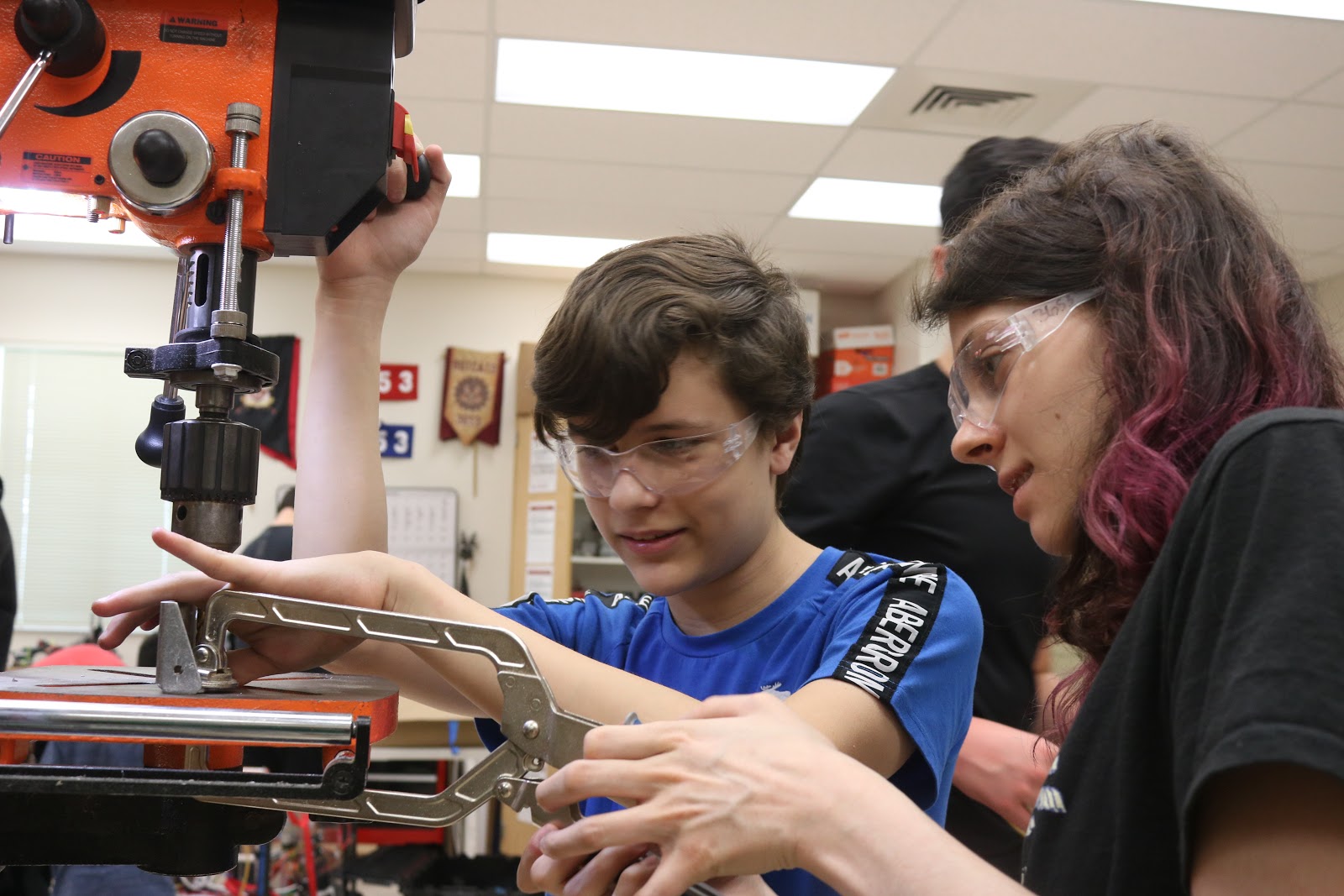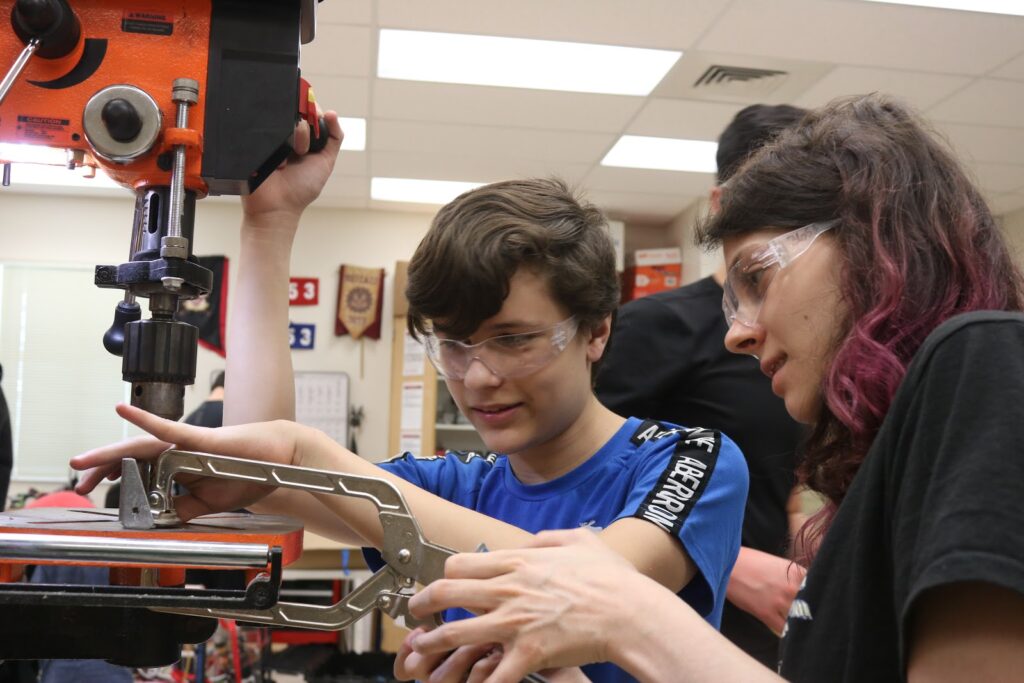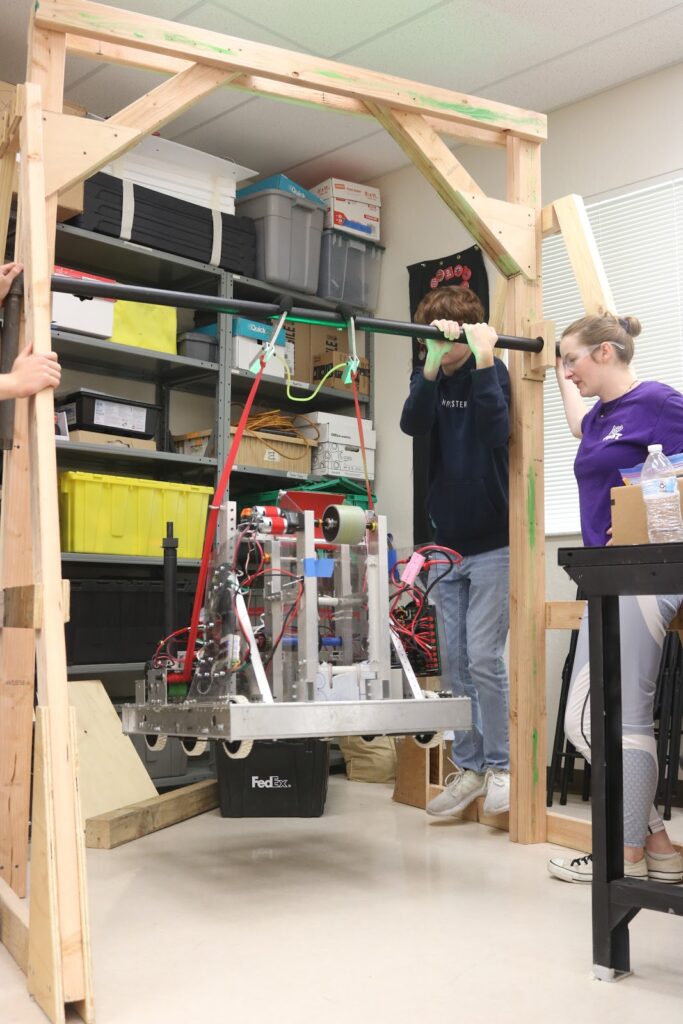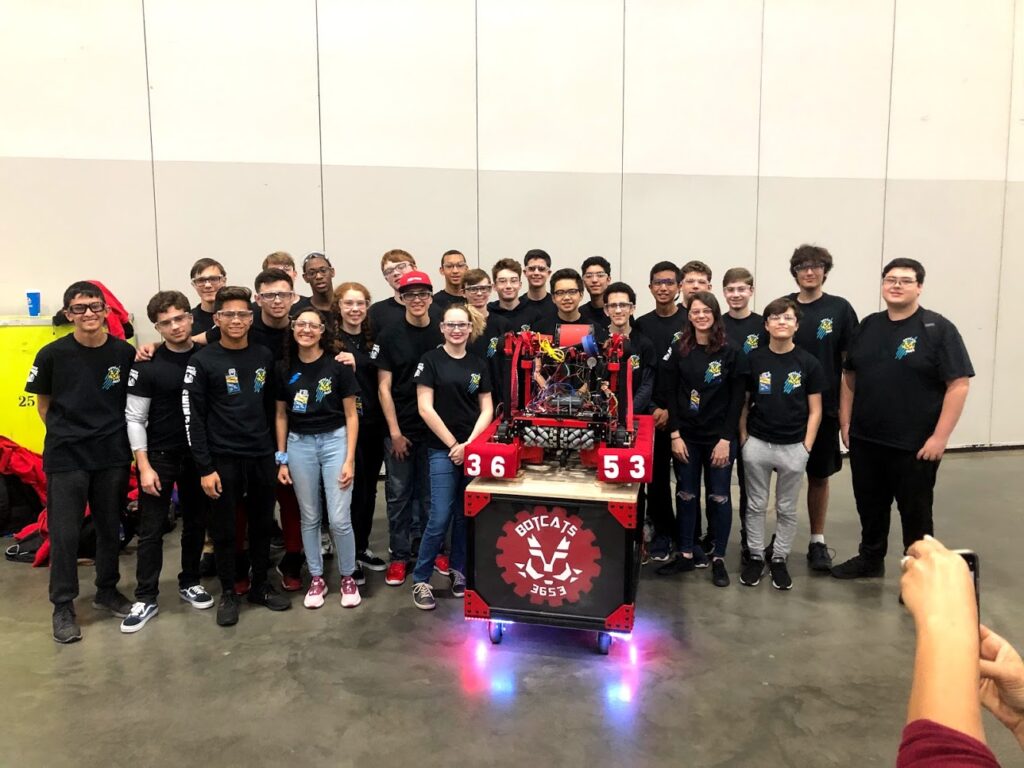
Botcats robotics team constructs a vehicle for competitive success
by Natalie Maronas

Starting on the final version of the robot, the power drill incised into the metal plate as a strong grip held down the lever. The tally marks on the board counted 8 times where the prototype robot had to be undone and remade, but every moment marked another opportunity for the team to learn and grow. Team 3653, also known as the Botcats, worked arduously as they pushed through their final days of build season and paved the path to their inevitable victory.
Now in their 10th year of the program running, the West Broward Robotics Team prepared for the upcoming FIRST Robotic Competition (FRC) Palmetto Regionals at South Carolina on Feb. 27 and South Florida Regionals on Apr. 2. Having won the Regional Engineering Inspiration award at Palmetto and netting for world championships with their record-breaking numbers for membership, the student-led family of the Botcats gave it their all as they reached new milestones with their refined robot.
“The students build the robot and it’s all of their design and construction skills,” said FIRST robotics mentor and volunteer Kate Sample. “They’ve really made a huge effort in making themselves more autonomous as a team and building their knowledge. They made all of the decisions, and they are responsible for a lot more than they’ve been before.”
In previous years, the Botcats had managed with just a small team of around 20 dedicated students under late science teacher Darlene Rice. Most years involved only regionals, however their 2018 season stood out as they were able to make it to world championships in Houston with the team they were paired with. Now supervised by chemistry teacher Michelle Wilson and coached by Sample, they worked more than ever this year with more support and funding than ever before.
“We used to have access to really good parts and machines working at Motorola. But last year we started working here and, although we made a really good robot, we couldn’t make it past regionals without the resources,” said mechanical officer and senior Paul Navarrete. “This year, we’re definitely being more ambitious in constructing a better robot that we are capable of making.”

TEST RUN: Junior Stephen Berrelli helps hold up the black high rise bar next to mentor Kate Sample as the team tests out their prototype robot for the climbing challenge. With the support of many hands and sponsors, the team created the specific parts needed for the robot to accurately do all of the challenges present at the South Carolina regionals. Photo by Natalie Maronas
The robotics team has reached new heights with their membership and dedication, adding to their hopes for success at worlds. Starting out with around 100 incoming freshmen and now at a team of 51 total students, the strong numbers show promise for rounds and secured future leadership. With this, the group engaged in outreach as they worked with elementary students and introduced engineering and STEM to them through field trips and events. Their consistent work schedules and rigor also stand out compared to last year. Behind Wilson’s room, the group stayed long after school hours and spent the six build weeks tightening up the final prototype.
“Robotics is not just about building a robot,” Navarrete said. “We have lots of different teams that work on it and help the program. Each part really helps with costs and getting membership, which helps a lot with making us more capable at winning regionals.”
Various sections and officers make up Team 3653 to make not only the robot fully-functioning, but also the group itself. The mechanical team focuses on making the frame and parts of the robot, with the electrical team wiring and powering it. Alongside, the coding team programs the robot to have it controlled by the driver. Other non-mechanical sections help the club grow as well. The business team contracts companies for quotes and machine parts while the sponsorship team advertises for funding. The way the team is built shows the intricacies of their operations, all while exemplifying how everything in the build room is student-led.
“They did a really nice job planning all of it out with CAD and computer aid design before manufacturing,” Sample said. “You never really know what’s going to happen at the event since it is down to who you’re with and against. Still, we will put our best foot forward and train our driver and drive team.”
The process of making the robot also requires a taxing amount of time and precision. Weighing at 106 pounds and reaching as high as 7 feet with its extendable arms, the Botcats built a prototype to save resources and find the exact building process for the final version. For competitions, the robot is built with an intake, pulley belt and shooter to collect and shoot balls across the field. It also has a telescoping elevator made from tape measures and arms that can raise itself up a high beam. With students fine-tuning the robot and doing final test runs, they prepared for their long trip to Palmetto regionals.
“This is our first year traveling out of state for regionals, so it is cool that we’re able to go for the first time,” said project manager, electrical officer and senior Brandon Holtzman. “If we qualify with an award or win with the robot, we get to go to worlds. There are over 600 teams there to compete and they let us talk with companies and college recruiters that come there. It is a lot of work, but it is something I am excited for our team to go to again.”
With the final adjustments made, the team headed out to South Carolina to compete. There, the group ran their final test runs and made their last tweaks before sending their creation out to rounds. Making it through 13 qualifier and elimination rounds, the Botcats were able to soar to semifinals. Even with their streak halted, their massive growth throughout the year, as well as their dedication to outreach events, had them be the one team awarded with the Regional Engineering Inspiration award sponsored by NASA. Earning this award qualified them for worlds, where the team is enthusiastic of returning once again.
“I don’t think the team could’ve really done much better. We were really shooting for the award this year and that’s why we were so happy with getting it,” Holtzman said. “In terms of the robot’s performance, we were also really happy with it since we think it did the best that it could’ve done. In the end I’m really happy with everything that happened.”
Working hard to make themselves succeed even by themselves, the West Broward Robotics team had made significant progress in growing into a notable organization from the school, all with their competitions wins and their unbreakable teamwork. As they continue to garner more support and experience each year, there is no planning for what they will accomplish next.
“Our team is really proud of the fact that it is really student run. The mentors are really there because they have to be for the paperwork, but within the program it’s all about the students and experience,” Holtzman said. “Even if mentors know students are making a mistake, they got to let them learn from that mistake since the only way to learn is by making it.”

